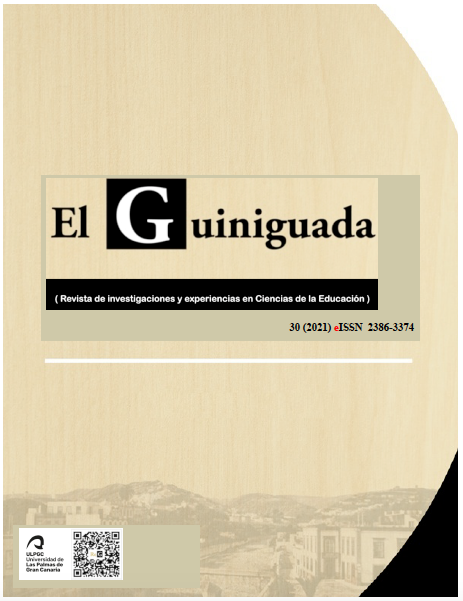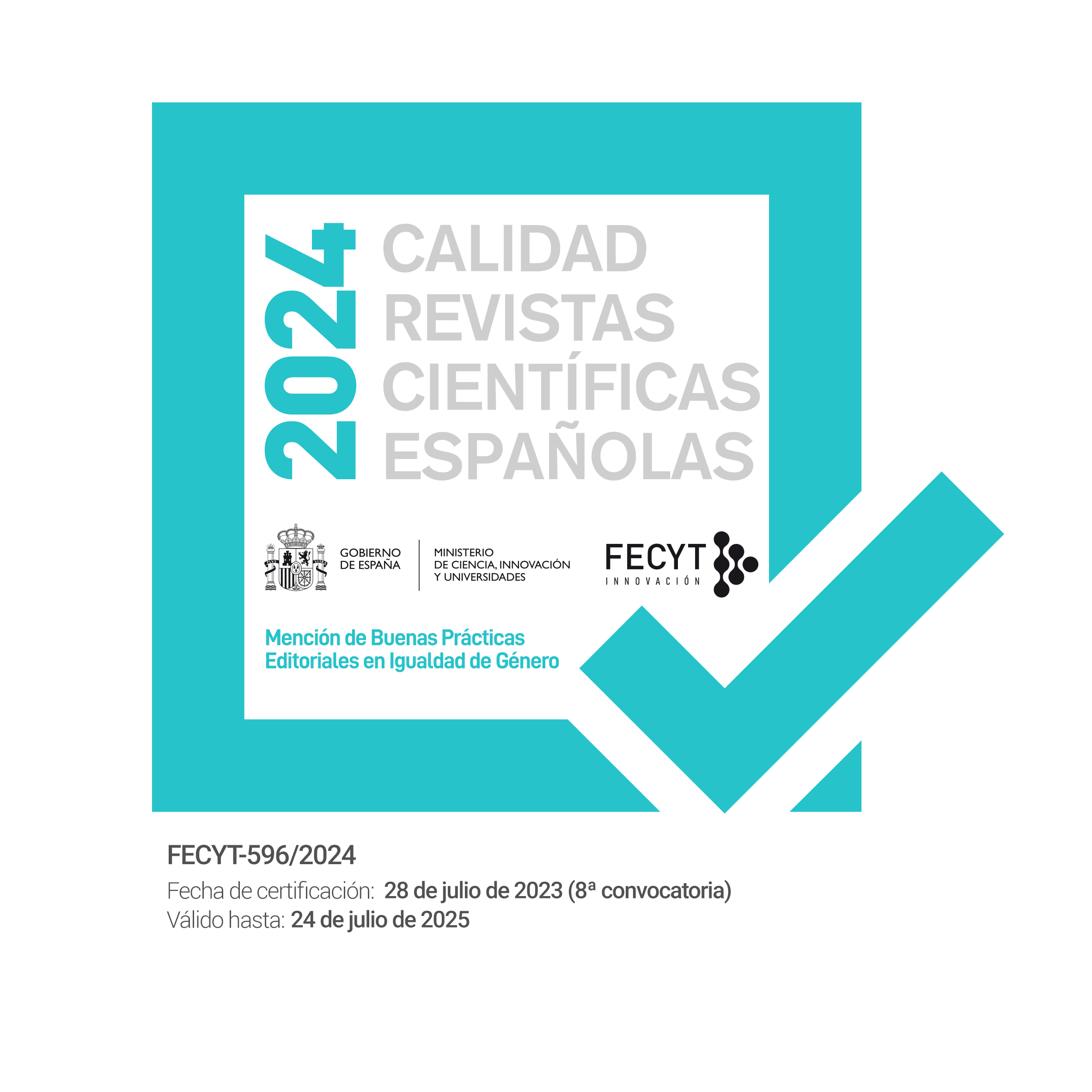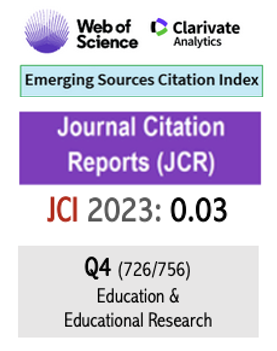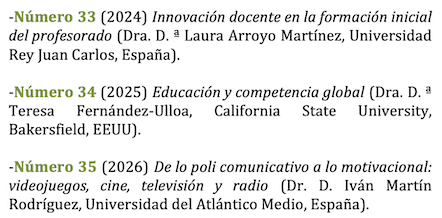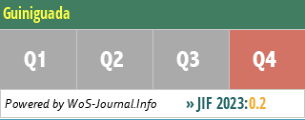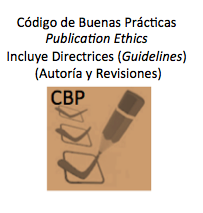Creative listening through program music. A proposal to develop creativity skills
doi.org/10.20420/ElGuiniguada.2021.412
Keywords:
escucha musical creativa, música programática, creatividad, educación musicalAbstract
For decades, auditory perception has been considered a fundamental element of music education. More specifically, creative music listening, that is based on divergent thinking, has been described as authentic music listening. However, a large part of the activities related to ear training have been dedicated to learn to identify pitches, intervals, chords, melody, and other basic elements of music, emphasizing convergent thinking. In this paper a proposal of creative music listening using program music is presented. During the implementation of this proposal students have developed several music listening and creative thinking skills, using the descriptive possibilities of program music.
Downloads
References
Copland, A. (1955). Cómo escuchar música. Fondo de Cultura Económica.
Dunn, R. E. (1997). Creative Thinking and Music Listening. Research Studies in Music Education, 8(1), 42–55. https://doi.org/10.1177/1321103X9700800105
Galiana, J. L. (2018). La improvisación libre y la escucha creativa. Eufonía, Didáctica de la Música, (76), 20-26.
Huron, D. (2002, 1 de noviembre). Listening styles and listening strategies [Ponencia]. Society for Music Theory 2002 Conference. Columbus, Ohio, USA.
Kerchner, J. (1996). Creative Music Listening. General Music Today, 10(1), 28-30.
Ketèlbey, A. W. (1920). In a Persian Market. Bosworth & Co.
Kratus, J. (2004, enero). Development of a Measure of Creative Music Listening [Ponencia]. 8th International Conference on Music Perception & Cognition. Northwestern University, Evanston, Illinois, USA.
Kratus, J. (2017). Music Listening Is Creative. Music Educators Journal, 103(3), 46-51. https://doi.org/10.1177/0027432116686843
Pastor Comín, J. J. (2009). Modelos de escucha y práctica creativa de la audición musical para el desarrollo de la competencia cultural y artística. En E. Nieto y A. I. Callejas (Coords.), Las competencias básicas: reflexiones y experiencias. Universidad de Castilla-La Mancha.
Peterson, E. M. (2006). Creativity in Music Listening. Arts Education Policy Review, 107(3), 15-21, https://doi.org/10.3200/AEPR.107.3.15-21
Roca, D. (2013). El análisis auditivo y el análisis orientado a la interpretación según la metodología IEM [Tesis Doctoral, Universidad de Las Palmas de Gran Canaria]. accedaCRIS. http://hdl.handle.net/10553/11319
Paynter, J. (1999). Sonido y estructura. Akal.
Polo Pujadas, M. (1999). La música programàtica, una nova música per a la societat del segle XIX. Revista catalana de sociología, (10), 187-201.
Willems, E. (2001). El oído musical: La preparación auditiva del niño. Ediciones Paidós Ibérica.
Published
How to Cite
Issue
Section
License
Authors who publish with this journal agree to the following terms:
- Authors retain copyright and grant the journal right of first publication with the work simultaneously licensed under a Creative Commons Attribution License that allows others to share the work with an acknowledgement of the work's authorship and initial publication in this journal. You can not make a commercial use of the work. The use derived from the work is also not allowed.
- Authors are able to enter into separate, additional contractual arrangements for the non-exclusive distribution of the journal's published version of the work (e.g., post it to an institutional repository or publish it in a book), with an acknowledgement of its initial publication in this journal.
- Authors are permitted and encouraged to post their work online (e.g., in institutional repositories or on their website) prior to and during the submission process, as it can lead to productive exchanges, as well as earlier and greater citation of published work (See The Effect of Open Access).
